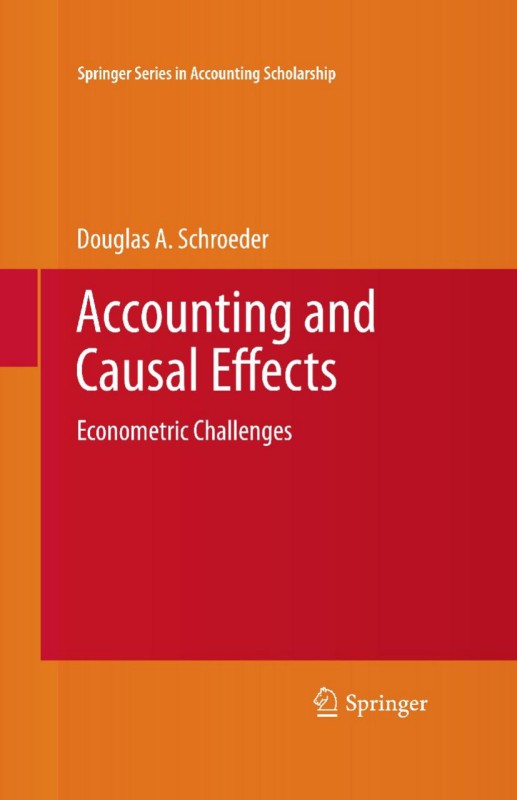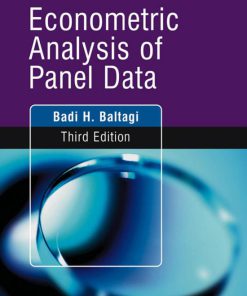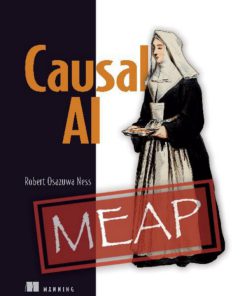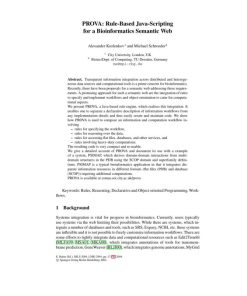Accounting and Causal Effects Econometric Challenges 1st Edition by Douglas A Schroeder ISBN 1441972250 9781441972255
$50.00 Original price was: $50.00.$25.00Current price is: $25.00.
Authors:Douglas A. Schroeder , Author sort:Schroeder, Douglas A. , Ids:9781441972248 , Languages:Languages:eng
Accounting and Causal Effects Econometric Challenges 1st Edition by Douglas A Schroeder – Ebook PDF Instant Download/Delivery. 1441972250, 9781441972255
Full download Accounting and Causal Effects Econometric Challenges 1st Edition after payment
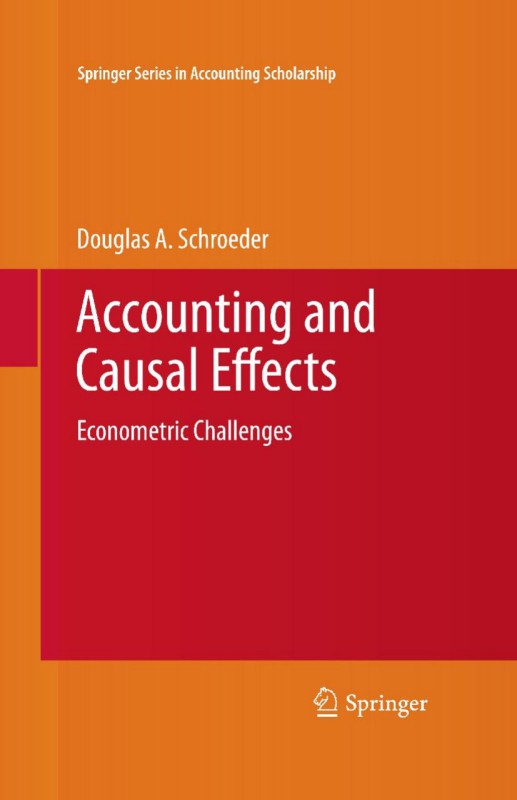
Product details:
ISBN 10: 1441972250
ISBN 13: 9781441972255
Author: Douglas A Schroeder
In this book, we synthesize a rich and vast literature on econometric challenges associated with accounting choices and their causal effects. Identi?cation and es- mation of endogenous causal effects is particularly challenging as observable data are rarely directly linked to the causal effect of interest. A common strategy is to employ logically consistent probability assessment via Bayes’ theorem to connect observable data to the causal effect of interest. For example, the implications of earnings management as equilibrium reporting behavior is a centerpiece of our explorations. Rather than offering recipes or algorithms, the book surveys our – periences with accounting and econometrics. That is, we focus on why rather than how. The book can be utilized in a variety of venues. On the surface it is geared – ward graduate studies and surely this is where its roots lie. If we’re serious about our studies, that is, if we tackle interesting and challenging problems, then there is a natural progression. Our research addresses problems that are not well – derstood then incorporates them throughout our curricula as our understanding improves and to improve our understanding (in other words, learning and c- riculum development are endogenous). For accounting to be a vibrant academic discipline, we believe it is essential these issues be confronted in the undergr- uate classroom as well as graduate studies. We hope we’ve made some progress with examples which will encourage these developments.
Accounting and Causal Effects Econometric Challenges 1st Table of contents:
1.1 Problematic illustration
1.2 Jaynes’ desiderata for scientific reasoning
1.3 Overview
1.4 Additional reading
Accounting choice
2.1 Equilibrium earnings management
2.2 Asset revaluation regulation
2.3 Regulated report precision
2.4 Inferring transactions from financial statements
2.5 Additional reading
Linear models
3.1 Standard linear model (
3.2 Generalized least squares (
3.3 Tests of restrictions and
(Frisch-Waugh-Lovell)
3.4 Fixed and random effects
3.5 Random coefficients
3.6 Ubiquity of the Gaussian distribution
3.7 Interval estimation
3.8 Asymptotic tests of restrictions: Wald,
statistics
3.9 Misspecification and
estimation
3.10 Proxy variables
3.11 Equilibrium earnings management
3.12 Additional reading
3.13 Appendix
Loss functions and estimation
4.1 Loss functions
4.2 Nonlinear Regression
4.3 Maximum likelihood estimation
4.4 James-Stein shrinkage estimators
4.5 Summary
4.6 Additional reading
Discrete choice models
5.1 Latent utility index models
5.2 Linear probability models
5.3 Logit (logistic regression) models
5.4 Probit models
5.5 Robust choice models
5.6 Tobit (censored regression) models
5.7 Bayesian data augmentation
5.8 Additional reading
Nonparametric regression
6.1 Nonparametric (kernel) regression
6.2 Semiparametric regression models
6.3 Specification testing against a general nonparametric benchmark
6.4 Locally linear regression
6.5 Generalized cross-validation (
6.6 Additional reading
Repeated-sampling inference
7.1 Monte Carlo simulation
7.2 Bootstrap
7.3 Bayesian simulation
7.4 Additional reading
Overview of endogeneity
8.1 Overview
8.2 Selectivity and treatment effects
8.3 Why bother with endogeneity?
8.4 Discussion and concluding remarks
8.5 Additional reading
Treatment effects: ignorability
9.1 A prototypical selection setting
9.2 Exogenous dummy variable regression
9.3 Tuebingen-style examples
9.4 Nonparametric identification
9.5 Propensity score approaches
9.6 Propensity score matching
9.7 Asset revaluation regulation example
9.8 Control function approaches
9.9 Summary
9.10 Additional reading
Treatment effects:
10.1 Setup
10.2 Treatment effects
10.3 Generalized Roy model
10.4 Homogeneous response
10.5 Heterogeneous response and treatment effects
10.6 Continuous treatment
10.7 Regulated report precision
10.8 Summary
10.9 Additional reading
Marginal treatment effects
11.1 Policy evaluation and policy invariance conditions
11.2 Setup
11.3 Generalized Roy model
11.4 Identification
connections to other treatment effects
11.5
11.6 Comparison of identification strategies
11.7
estimation
11.8 Discrete outcomes
11.9 Distributions of treatment effects
11.10 Dynamic timing of treatment
11.11 General equilibrium effects
11.12 Regulated report precision example
11.13 Additional reading
Bayesian treatment effects
12.1 Setup
12.2 Bounds and learning
12.3 Gibbs sampler
12.4 Predictive distributions
12.5 Hierarchical multivariate Student t variation
12.6 Mixture of normals variation
12.7 A prototypical Bayesian selection example
12.8 Regulated report precision example
12.9 Probability as logic and the selection problem
12.10 Additional reading
Informed priors
13.1 Maximum entropy
13.2 Complete ignorance
13.3 A little background knowledge
13.4 Generalization of maximum entropy principle
13.5 Discrete choice model as maximum entropy prior
13.6 Continuous priors
13.7 Variance bound and maximum entropy
13.8 An illustration: Jaynes’ widget problem
13.9 Football game puzzle
13.10 Financial statement example
13.11 Smooth accruals
13.12 Earnings management
distribution
13.13 Jaynes’
13.14 Concluding remarks
13.15 Additional reading
13.16 Appendix
People also search for Accounting and Causal Effects Econometric Challenges 1st:
You may also like…
eBook PDF
Econometric Analysis of Panel Data 3rd Edition by Badi H. Baltagi ISBN 0470014563 9780470014561
eBook PDF
Adverse Drug Effects A Nursing Concern 1st edition by Jennifer Kelly ISBN 0826106161 978-0470031612

